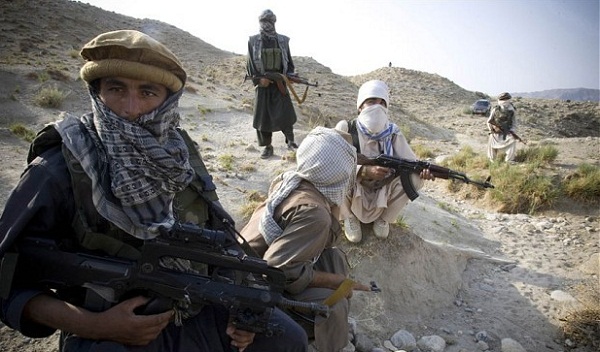Kabul Crumbling Again?
By Agha Iqrar Haroon
United Nations in its recent report indicates that security has diminished in Afghanistan, especially over this last year, as the Taliban have made steady military gains. Roughly half of the country’s 34 provinces are under severe or strong risk of falling to the insurgents (Taliban and Daish) while Afghan economy is struggling to adjust to a sharp drop-off in military-related spending. At present, ISIS (Daish) is dominant in only a small number of provincial districts across the east and north but its growth is possible as Taliban are leaving certain areas to ISIS for reasons that are known only to Taliban leadership.
On the other hand, Afghan unity government is fixed with political wrangling, endemic corruption and failure in establishing independent revenue generation system. The financial system of Afghanistan can be considered “a parasite economy” that had been depending upon foreign aids and funding.
Afghanistan’s economic freedom cannot be fully assessed by researchers because of the lack of reliable comparable data. The government’s compilations of official economic data are inadequate, and data on Afghanistan in many of the international sources relied upon for Index grading is incomplete.
The top income and corporate tax rates are 20 percent. Driven by sales taxes, overall tax revenue equals about 7 percent of total domestic income and Afghan Government relies heavily on foreign assistance.
Two years of political and security uncertainty have resulted in reduced economic activity and the emergence of significant fiscal vulnerabilities. The financial sector remains underdeveloped, and scarce access to financing hinders private-sector growth. Three state banks and over 15 commercial banks are in operation across the country, but trust in the banking system is weak.
The government of Afghanistan claims that the country holds up to $3 trillion in proven untapped mineral deposits, which could make it one of the richest mining regions on earth. However, people are shy to invest on long term basis in Afghanistan. A number of Chinese and Indian firms initiated huge contracts in mining sector but such projects were either halted or withdrawn due to law or order situation in the country.
India’s most significant investment project in Afghanistan was Hajigak mines in Bamiyan province. A Steel Authority of India Ltd-led consortium of six companies had won the rights to extract iron ore from the mines in 2011. The investment said to be worth $ 11 billion, which included the construction of a rail link from Hajigak to the Chabahar Port in Iran, a power transmission line and a power plant was the largest investment in a single project in Afghanistan till date. However, project was unofficially scraped in May 2015 due to grave law and order situation in Afghanistan.
Having no mechanism to increase financial resources, infighting within the ranks of government and ever rising power of Taliban are major factors for evaporating writ of Kabul over the other parts of war-ravaged country.
Though United States of America and United Nations injected billions of $ in Afghanistan but they fail to pull this country out of extreme poverty and it remains one of the least developed countries in the world, ranking 175th on the United Nation’s Human Development Index.
Critics claim that Afghanistan has historically known as “A land of missed opportunities” while Afghans are known in Central Asian fork lures as “Thankless Nation”. People believe in Central Asia that Afghans kill everybody whosoever tries to help them out of poverty. Recent examples are Russians, Americans and Pakistanis.
There is no doubt that well-educated and well-groomed Afghan President Ashraf Ghani tries his best for improve relations with Pakistan but troubles within ranks of Afghan government can not let him work for better relation with neighbouring Pakistan who had been an integral part of Afghan Foreign Police since Afghan Jihad was initiated in late 70s. Pakistan is blamed to consider Afghanistan as its fifth province and its battle ground for its strategic depth while Pakistani people believe that they have ruined social fabrics of their society in a quest to help Afghan refugees.
Pakistan Army that invited over 3.5 million Afghan refugees to Pakistan in early 80s is the “Top Target” of terrorists who are living inside Afghanistan. Pakistan has been demanding Afghan government to action against leadership of Tehrik-i-Taliban Pakistan (TTP) including its chief Mullah Fazlulllah but Afghan government believes that TTP leadership is not residing inside Afghanistan. Meanwhile, there were reports in Afghan and international media that TTP chief Mullah Fazlulllah had a road accident in Asadabad region when his twin cab hit a rock and he got injuries.
Situation in Afghanistan is quite grave and United Nations Assistance Mission in Afghanistan (UNAMA) in its latest report documented 11,002 civilian casualties (3,545 deaths and 7,457 injured) in 2015, exceeding the previous record levels of civilian casualties that occurred in 2014. The latest figures show an overall increase of four per cent during 2015 in total civilian casualties from the previous year. UNAMA began its systematic documentation of civilian casualties in 2009.
Meanwhile, top US think tanks believe that the actions of the Obama administration in 2016 can significantly affect the Afghan government’s prospects of overcoming the security, economic, and political challenges that threaten the viability of its unity government, and ultimately that of the Afghan state.
US President Obama had until mid-2015 planned a complete pullout of all American military personnel by the end of his term of office. His October 2015 decision to leave 5,500 U.S. troops in the country is important, because it does not foreclose the support options available to his successor as president. NATO has also announced that it hopes to have as many as 12,000 troops (including U.S.) in Afghanistan through 2016 and has promised to sustain Afghan security forces financially through 2020. But the level and kind of involvement of the United States and its allies is contingent on the performance of the Afghan army, its quasi-military police, and government-backed local defense militias. A major Taliban surge in 2016 or later that puts the Afghan military under severe stress would no doubt compel Washington to reassess the U.S. force structure in Afghanistan, as well as the need for additional material support. In a worst case scenario, rapidly collapsing Afghan defenses could force the United States and its NATO partners to conclude that our further military presence in the country is untenable.
Year 2016 has already seen another effort to launch a peace process with the Taliban. The United States, China, Afghan government and Pakistan seek a political outcome to the 14-year-old conflict. Hopes rest on the belief that the Taliban and other insurgent groups will agree to a cease-fire, followed by a power-sharing arrangement with the Kabul government. Yet there is little reason to believe that the insurgent leaders are ready to compromise, particularly as they perceive themselves to be succeeding militarily. Moreover, the government’s vision of an Afghanistan that fosters democratic institutions and human rights sharply contrasts with Taliban ideas of a Sharia state.
Independent circles in Kabul accept that there is no writ of the government in half of the country and recent successes of Taliban simultaneously in east, west and north of Afghanistan testify that Afghan government can crumble anytime and initiating a peace process with the Taliban and furthering a strategy of regional economic integration are only solutions left with Afghan government in Kabul.
Disclaimer:
The views and opinions expressed in this article/Opinion/Comment are those of the author and do not necessarily reflect the official policy or position of the Dispatch News Desk. Assumptions made within the analysis are not reflective of the position of Dispatch News Desk.






